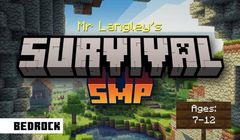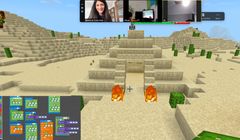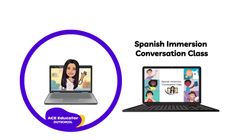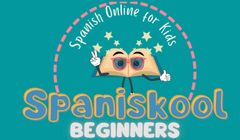Complete guide to the 4 learning preferences and 8 intelligences
VARK model’s four learning styles and Howard Gardner’s theory of multiple intelligences, and how you can leverage them for your kids.
Your child will spend all day on the floor of his room reading but is easily distracted when the teacher is speaking. Or maybe she loves to paint but squirms through her piano lessons. People naturally gravitate toward certain activities, but are these inclinations signaling something deeper than that?
What can our children’s individual learning styles and preferences tell us about how to structure their educational experiences?
While some studies have argued that there are not cut-and-dry categories of learning styles for children, if you ask any parent you hear that one size definitely does not fit all. Children need customized approaches to learning.
While we know that there are some concerns about labeling children’s learning styles, we hear time and again from our parent community that different Outschool classes play to different kids’ strengths—and this is something that is not always available or even encouraged in more traditional educational school settings.
We believe it’s valuable to explore where your learner might fit into one or several of these learning preferences because at the end of the day one thing that research does bare out is that a more engaged child is one that is learning more.
With that in mind, read on to learn more about the VARK model’s four learning styles and Howard Gardner’s theory of multiple intelligences.
What is the VARK model?
Created by Neil Fleming in 1987, the VARK model determines a learner’s modal preference, in other words, the way they prefer to take in information. VARK uses a learning styles inventory, or questionnaire, to determine a learner’s type: visual, aural, reading/writing, or kinesthetic.
Its creators suggest that the styles aren’t rigid—many learners are multimodal, which means they don’t fit neatly into one of the categories. Outschool offers live online classes to help your learner discover their preferred learning style.
The 4 learning styles
There are learning activities and teaching methods that are well-suited to each type of learner.
Visual
Graphic elements like maps, charts, and diagrams can help visual learners take in information. Visual learners would love:
Taking a graphic design, architecture, or art class
Learning how to draw or drawing Anime
Designing their own video game or learning photography,
Joining an art club, or exploring art history
Graphic novels or picture books
Aural
Auditory learners process via conversation—even if it’s in the form of an email or chat, and are likely to repeat elements of a lesson or ask questions before they’re fully finished thinking. Auditory learners would love:
Trying a comedy or improv class
Class presentations or show-and-tell
Creating and performing a play, a contemporary dance, or puppet show
Listening to and making podcasts
Group work and social clubs
Reading and writing
Reading and writing learners prefer books, lists, articles, reports, essays—anything they can digest in the written form—so textbooks and writing assignments are their happy places. Reading and writing learners would love:
A writing, literature, or communications class
A teacher assigning extra reading
Joining book clubs, expanding vocabulary, and journaling
Kinesthetic
Kinesthetic learners learn by doing, or even watching someone else do, as in a real-life demonstration or YouTube tutorial, or anything that allows them to have an experience. Kinesthetic learners would love:
Taking a film, science, art, or fitness class
A teacher bringing in a guest speaker
Field trips, nature walks, or science fairs
Visiting museums, zoos, or parks
Reading case studies, watching videos, or reading articles
Is it a learning style or a preference?
While the idea of learning styles gained a lot of traction during the 1990s and early 2000s and plays a major role in how educators approach teaching and learning, more recent research (including a 2018 study in Anatomical Sciences Education) suggests that categorizing learners by “type” won’t necessarily help people learn academic material faster or more effectively.
Even if the types of learning styles aren’t reliable study methods, they can tell us a lot about how learners prefer to absorb information. The VARK website itself acknowledges that the model isn’t the be-all-end-all:
“[Knowing your learning style doesn’t improve learning] in the same way that knowing you have a disease does not cure the disease...It is the next step that is important – When people make changes to their learning, based on their VARK preferences, their learning will be enhanced.”
This means that tailoring learners’ experiences to their styles can go a long way toward motivating and engaging them.
The 8 multiple intelligences
Another theory, put forward by Harvard Professor Howard Gardner in 1983, suggested that while learning styles can tell us about a person’s approach to learning, people also possess different types of intelligences at various levels.
This, too, could influence a learner’s motivation and direction: someone with low levels of verbal-linguistic intelligence might find learning a language tedious, while a learner with interpersonal intelligence will likely thrive at summer camp.
The theory of multiple intelligences also leaves room for learners to adapt their technique to the situation: “Someone with high visual-spatial intelligence, such as a skilled painter, may still benefit from using rhymes to remember information,” says Edutopia. The 8 types of intelligence include:
Verbal-linguistic:
A learner with this type of intelligence is great at speaking, writing, and analyzing. They would love:
Joining a debate club
Writing essays and op-eds
Logical-mathematical
A learner with this type of intelligence is great at solving problems. They would love:
Solving equations and math games
Learning about logic or trying a debate camp
Doing, or even creating, puzzles and riddles
Visual-spatial
A learner with this type of intelligence is similar to a visual learner in the VARK model—they enjoy poring over maps, infographics, and charts. They would love:
Exploring graphic design, interior design, web design, digital art, 3D modeling or printing, fashion design, and maps
Watching an animated “explainer” video
Following illustrated step-by-step instructions; e.g. cooking a recipe
Musical
A learner with this type of intelligence is, well, musical. They would love:
Dance or gymnastics
Making playlists and researching new music
Naturalistic
A learner with this type of intelligence thrives when learning how natural systems work and exploring the outdoors. They would love:
Hiking and exploring wilderness and wildlife
Learning about plants, gardening, collecting and categorizing plants, etc.
Visiting beaches and streams, learning about Oceania, etc.
Interacting with or learning about animals; e.g. fun pet activities
Bodily-kinesthetic
Learners with this type of intelligence are great at physical performance and problem-solving. They would love:
Sports and physical outdoor playground activities
Cleaning, cooking, and organizing
Interpersonal
Learners with this type of intelligence have an innate understanding of and ability to connect with people. They would love:
Social clubs, book clubs, and art clubs
Participating in a pen pal, cultural exchange, or volunteer program
Intrapersonal
Learners with this type of intelligence are very in tune with themselves and their inner lives. They would love:
Surveys, quizzes, and questionnaires
Meditation and yoga
There are many different schools of thought about types of learning styles, and conventional wisdom about it continues to evolve. Knowing your child’s preferred learning style can help you encourage them to invest in activities that they will enjoy and excel at. This builds educational and life skills as well as self-esteem and confidence.
*This article was originally published in June 2020 and was updated in November 2022.

Topics Related to Arts & Crafts
Similar Arts & Crafts articles
Arts & Crafts classes









